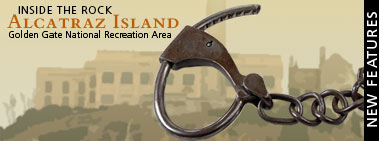
Laws, Regulations, and Conventions
Related to Records and Archives
Laws
Federal Property and Administrative Services Act of 1949, as amended (40 USC 483 [b])
Preservation, Arrangement, Duplication, Exhibition of Records (44 USC 2109)
Authorizes the Archivist of the United States to provide for the preservation, arrangement, repair and rehabilitation, duplication, description of and exhibition of records or other documentary material transferred to the National Archives and Record Administration (NARA).
Disposal of Records (44 USC 3301 et seq.)
Defines official records that are made or received by an agency of the United States government under federal law or in connection with the transaction of public business and directs that such records be transferred to the National Archives and Records Administration in accordance with an established schedule.
Federal Records Act of 1950, as amended
(Records Management by Federal Agencies, 44 USC 3101 et seq.)
Museum Properties Management Act of 1955 , as amended (16 USC 18)
Freedom of Information Act (5 USC 552)
Privacy Act of 1974 (5 USC 552a)
The Copyright Act of 1976 (17 USC 101 et seq. [1988 & Supp. V 1993])
Regulations
"Federal Records: General" (36 CFR 1220)
"Disposition of Federal Records" (36 CFR 1228)
This regulation sets policies and establishes standards, procedures and techniques for the disposition of all Federal records in accordance with 44 USC Chapter 21, 29, 31 and 33.
"Federal Property Management Regulations" (41 CFR 101) FPMR
"Preservation of American Antiquities" (43 CFR 3)
Section 3.17 requires that every collection recovered under the Antiquities Act be preserved in the public museum designated in the Antiquities Act permit, and be accessible to the public.
Conventions
1970 UNESCO Convention on the Means of Prohibiting and Preventing the Illicit Import, Export, and Transfer of Ownership of Cultural Property (19 USC 2601)
As one of 60 signatories to the Convention, the United States agrees to work with other nations to prevent the import of and trade in archeological and ethnographical materials (when requested) and in stolen cultural collections. The United States is the only major art-importing country to sign the convention to date.
Archeological materials must be "of cultural significance, at least 250 years old and normally discovered as a result of scientific excavation, clandestine or accidental digging, or exploration under water." Ethnographic materials must be "the product of a tribal or nonindustrial society and important to the cultural heritage of a people because of its distinctive characteristics, comparative rarity, or its contribution to the knowledge of the origins, development or history of that people."
Note: There may be a lag between the passage of laws and updates listed on linked non-NPS sites. USC is the U.S. Code; while CFR is the Code of Federal Regulations.
|





